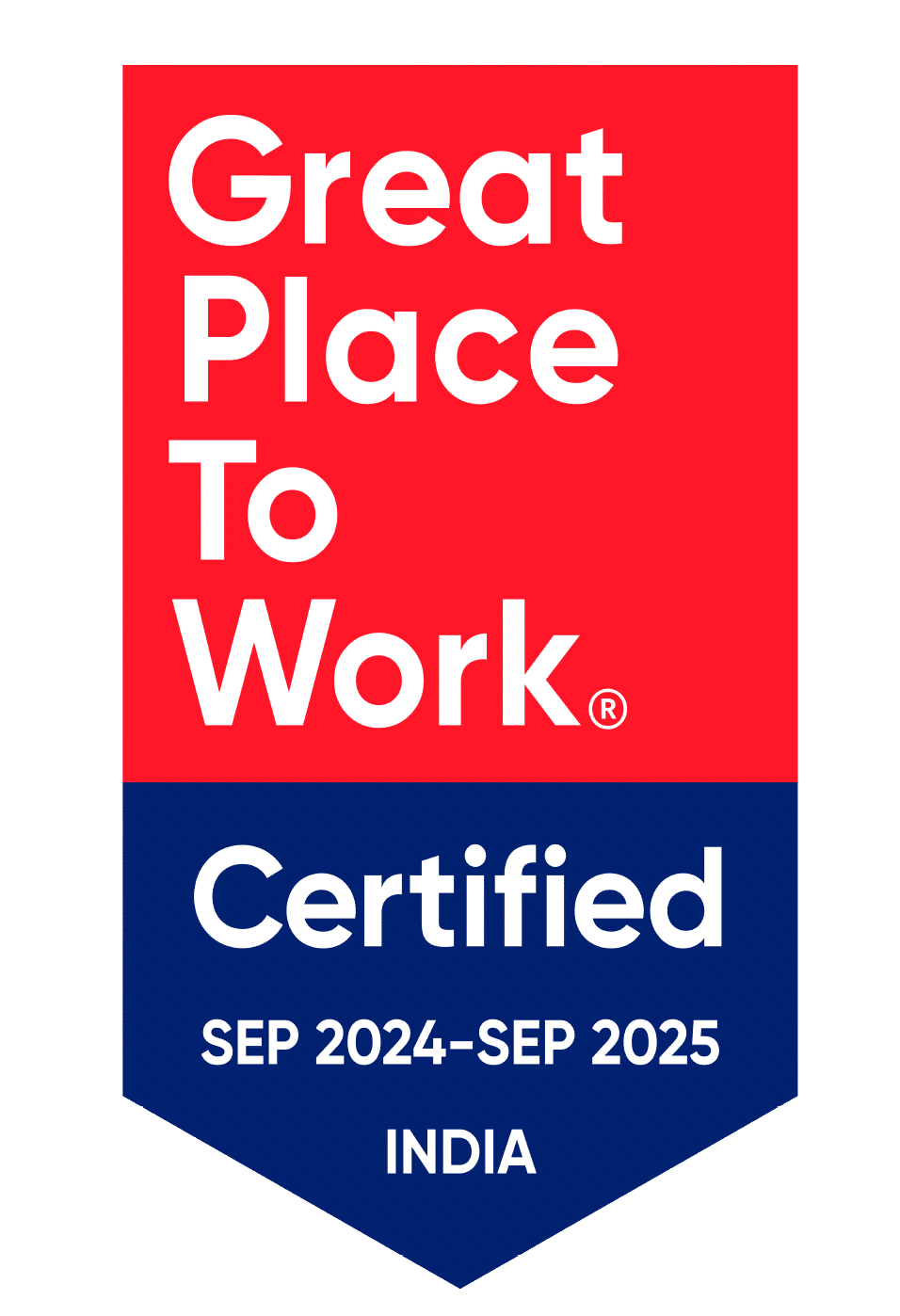A Comprehensive Guide to Employee Directory Software

Understanding Employee Directory Software
Effective communication and streamlined collaboration are crucial for organizational success. As companies grow and adapt to remote and hybrid work environments, the need for centralized and efficient tools to manage employee information has never been greater. This is where employee directory software comes into play.
By offering searchable profiles, organizational charts, and integrated communication tools, these systems simplify the process of finding and connecting with colleagues across departments, locations, or time zones.
Employee directory software is a centralized digital platform designed to store and manage employee information. It functions as a virtual address book where employees can easily search for colleagues based on specific criteria such as name, department, job title, or location.
The employee directory app goes beyond just contact information; it often integrates with other HR and communication tools to streamline internal processes and enhance team collaboration.
Challenges that Employee Faces Within Internal Organization
- Lack of Clear Communication Channels
Effective communication is crucial for productivity, yet many businesses struggle with fragmented or unclear communication channels. Employees may find it difficult to communicate with others, resulting in misunderstandings, delays, and a lack of collaboration across teams.
This often leads to inefficiencies, as messages may be missed or misinterpreted, and the right information may not reach the right people at the right time. - Difficulty in Tracking Employee Performance
Without clear systems in place to monitor and track employee performance, businesses face challenges in identifying areas for improvement or recognizing top performers.
Inconsistent feedback, lack of measurable goals, and absence of performance metrics make it difficult for managers to provide the support employees need to succeed, resulting in missed opportunities for development and growth. - Challenges in building connections with new employee
When a new intern or employee joins, identifying their role and transferring domain knowledge can be challenging, especially if they are new to the industry. Providing clear SOPs and defined objectives is essential for a smooth transition.
Without proper guidance, freshers may feel unsupported and unsure whom to approach, leading to communication gaps that hinder workplace coordination and team efficiency. - Lack of Centralized Employee Data
In large organizations, maintaining up-to-date, accurate, and easily accessible employee information can be a challenge. Dispersed or fragmented systems for managing employee records whether digital or paper-based can result in data duplication, errors, and time wasted searching for information.
This creates inefficiencies and slows down decision-making processes, as accurate employee information is often not readily available when needed. - Limited Collaboration Between Teams
As organizations grow, collaboration between departments can become more difficult. With different teams working in silos and with varying levels of access to important information, employees can struggle to work together efficiently.
This lack of cross-functional collaboration leads to missed opportunities, reduced innovation, and slower problem-solving across the organization. - Difficulty in Managing Remote Teams
The rise of remote work has brought its own set of challenges, particularly in terms of managing and engaging remote employees.
Without in-person interaction, it can be harder for managers to assess employee productivity, offer support, or foster a strong team culture.
This can lead to feelings of isolation among remote workers, difficulty in maintaining accountability, and challenges in aligning teams toward common goals. - Employee Engagement and Retention Challenges
High turnover and low employee engagement are common challenges faced by businesses.
If employees do not feel connected to their work or the company culture, they are more likely to leave. Additionally, a lack of career development opportunities, poor management practices, or insufficient recognition can lead to disengagement.
Businesses struggle to retain their talent, leading to a constant cycle of hiring and training new employees. - No Integration with Other Tools
When employees switch between different systems for daily tasks, it creates inefficiencies. This lack of integration with the right systems leads to duplicated efforts and challenges in collaboration, as teams cannot easily access the same data.
Over time, these workflow disruptions lower productivity and increase the risk of errors. Integrating tools into a unified system can streamline processes and improve overall efficiency. - Navigating Compliance and Legal Regulations
Businesses must navigate a complex landscape of legal and compliance requirements, particularly when managing employee data and ensuring fair labour practices.
From data protection laws to industry-specific regulations, staying compliant is a significant challenge.
Without having proper software in place, a company might fail to adhere to these regulations and can result in legal consequences, financial penalties, and reputational damage to the organization. - Handling Organizational Change and Transition
Whether due to mergers, acquisitions, or internal restructuring, organizations often face challenges during periods of change. Employees may feel uncertain about their roles, career paths, or job security, which can affect morale and productivity.
Managing change effectively requires clear communication, strong leadership, and support systems to help employees navigate transitions smoothly and stay engaged during uncertain times.
Solutions to Overcome Internal Communication and Collaboration Issues
- Implementing Employee database software into Place
To solve internal communication challenges, it is better to rely on an effective staff directory tool that enhances communication between employees.
It provides hierarchical chart where managers and team leaders can easily view their core team without any hurdles.
It improves search functionality, reduces human errors and automates the tasks. - Boost Knowledge Sharing with Skill Filters
Employee directory software often includes filters that allow employees to search for colleagues based on their skills or expertise.
This feature promotes knowledge sharing, as employees can easily identify subject matter experts within the organization and reach out for assistance, fostering collaboration across teams. - Streamline Communication with Centralized Employee Data
By providing new hires with easy access to organizational charts, team member information, and departmental contacts, you help them integrate into the company faster.
This reduces confusion and supports smoother onboarding, making new employees feel more connected and informed. - Promote Transparency with Organizational Charts
Selecting an effective employee directory application helps to see the organizational hierarchy with charts. This provides a clear view of reporting structures.
These charts help employees understand their team’s hierarchy and where they fit within the company, improving transparency.
A clear view of the organizational structure also helps employees know who to approach for specific queries or support. - Get Regular Feedback from Team
Continuous improvement is key to any system’s success. Set up feedback mechanisms within your employee database software to gather insights from users.By collecting feedback on usability, functionality, and any issues employees face, you can ensure that the software evolves to meet their needs and remains effective.
Key Features of Employee Directory Software
- Search Functionality
One of the key features is the ability to find the right talent for each task and connect with them efficiently.
It offers multiple search and filtering options, allowing teams to easily identify the right team member to collaborate with and complete tasks effectively. This feature enhances productivity and streamlines communication across teams. - Developer Team: Please use employee directory app product images that are relevant to the subheading
- Advanced Filtering options
Employee directory application with advanced search features filtering options, employees can quickly locate colleagues by inputting names, departments, roles, skills, or custom attributes like project assignments or specific areas of expertise.
This ease of access ensures that employees spend less time searching and more time focusing on meaningful interactions and collaboration.
With effective filtering features, employees can now filter out staff based on their role regardless of their strength of organization.
Fast access to contact information allows team members to connect instantly with the right people, speeding up project timelines. With a well-organized directory, employees can quickly reach out to necessary stakeholders, teammates, or experts to make informed and timely decisions. - Getting Contact Information of Teammates
Access to accurate contact information is a critical feature of any employee directory application, significantly enhancing communication within teams.
This information typically includes details such as job roles, names, email addresses, phone numbers, departments, reporting structures, profile pictures, and other key information about coworkers.
With access to such comprehensive data, team members can effortlessly reach out to the right individuals for collaboration or meetings.
This functionality not only simplifies the process of aligning collaborative tasks but also ensures that meetings are planned efficiently, and the appropriate staff members are engaged. Moreover, having readily available contact details fosters transparency, strengthens workplace relationships, and promotes clear and effective management across the organization. - Centralized Employee Database
It is the backbone of a well-organized company, serving as a single, secure hub for all employee information. It simplifies data access for HR and management, ensuring accuracy and consistency across departments while enhancing data privacy through controlled access.
Scalable and adaptable, it supports organizational growth, reduces redundancies, and improves efficiency.
By providing seamless access, it also fosters collaboration and supports remote and hybrid work, making it essential for modern organizations focused on privacy and efficiency. - Clear View of Organization Hierarchy
Interactive organizational charts in Staff directory software provide a clear and easy-to-understand visual representation of the company’s structure, highlighting team hierarchies, reporting lines, and relationships between departments.
These charts help employees quickly grasp their role and how they fit into the bigger picture of the organization, which fosters a better understanding of their position.
For managers, these interactive charts offer a powerful tool to design, optimize, and adjust team structures as needed, making it easier to align talent and resources with business goals.
They support better strategic planning by giving leaders a clearer view of how teams work together, ultimately aiding in more informed and effective decision-making. - Real Time Data Synchronization
Real-time data synchronization keeps employee information accurate and up to date by automatically syncing with platforms like Microsoft 365.
This means any changes made to the directory are instantly reflected, so you never have to worry about outdated information.
With records always current, everyone in the organization has access to the most reliable data, which boosts efficiency and reduces the risk of errors.
This seamless syncing ensures smooth operations and helps teams make more informed decisions. - Employee Special Events
Celebrate employee milestones like birthdays and work anniversaries effortlessly with automated reminders and notifications across your organization.
By highlighting these special events, you foster a positive work culture that values and appreciates individuals, strengthening team connections.
Never miss an opportunity to recognize your team members, as these reminders ensure timely celebrations and acknowledgments for every occasion.
This feature enhances employee engagement, boosts morale, and creates a workplace where everyone feels valued and celebrated. - Excluding Former Employees
Ensure your directory remains current by automatically excluding employees who have left the company, maintaining accurate and relevant records. You can exclude employees by using domain, department, Job title, name, office location, custom fields etc.,
This automated process prevents outdated information from cluttering your system, ensuring only active employees are visible in the directory.
By keeping the directory up to date, you streamline communication and reduce confusion, improving organizational efficiency.
This feature supports smooth transitions and maintains a professional, accurate representation of your team always. - Data Security
When it comes to storing employee information, security is a top concern for any organization.
Organizations must ensure that personal and confidential data is stored securely to prevent unauthorized access, misuse, or breaches. To address these concerns, robust security measures are implemented to safeguard employee data.
By implementing employee directory app, the security and confidentiality of employee data, organizations demonstrate their commitment to privacy and compliance with data protection regulations.
his fosters a sense of trust among employees, ensuring they feel confident that their personal information is handled with the highest level of care and responsibility.
Benefits of Using Employee Directory Software in Your Organization
- Faster Communication Across Teams
With centralized employee database software, employees can quickly search and contact colleagues, breaking down communication silos. This ensures faster responses, fewer delays, and more cohesive teamwork. - Improved Collaboration Opportunities
Staff Directory software enables employees to locate team members based on skills, departments, or roles, making it easier to collaborate on projects. It streamlines cross-department communication and fosters a collaborative work culture. - Seamless Remote Work Integration
For organizations with dispersed teams, employee directory software for remote teams is a game-changer. It ensures that employees, no matter where they are located, can seamlessly access critical contact information and navigate team structures with ease. This fosters a sense of connection and collaboration among remote workers, breaking down barriers that physical distance often creates. - Better Employee Engagement
While a company strives to achieve its goals, strong internal engagement among team members makes the process more efficient and seamless. Employee directory software enables individuals to connect with the right colleagues, fostering collaboration and idea-sharing to complete tasks effectively.
This sense of inclusion and transparency enhances overall morale and boosts employee engagement. - Quick Problem Solving
By easily identifying subject matter experts or connecting with relevant colleagues, employees can tackle challenges and resolve issues more efficiently. The employee database software simplifies the process of finding the right support, eliminating unnecessary delays and barriers.
This streamlined approach not only saves time but also fosters a collaborative work environment, enabling teams to focus on delivering results with greater confidence and speed. - Secures Employee sensitive information
Using employee database software with robust security measures in place, businesses can ensure that sensitive employee information is protected from unauthorized access, breaches, or misuse. By implementing advanced authentication protocols and strict access controls, only authorized personnel can view or edit employee data, maintaining the confidentiality and integrity of the information.
This not only builds employee trust but also gives confidence within the workforce. - Increased Productivity
In organizations, finding the right person for documents or assistance can be challenging, causing delays and frustration.
An employee search application simplifies this by providing a centralized platform to quickly access contact details by name, department, or role.
This ensures smoother collaboration, saves time, and helps teams stay organized, boosting productivity and improving communication. - Real Time Data Synchronization
Accurate and up-to-date employee information is critical for smooth operations. With real-time synchronization and dynamic updates, changes are instantly reflected, ensuring consistency and eliminating outdated records.
This reliability empowers teams with precise data, fostering trust and efficiency across the organization. - Clear Visualization of Hierarchy structure
Employee directory software provides interactive organizational charts that offer clear, visually engaging representations of company hierarchy, team structures, and reporting lines.
These charts help team members quickly understand their roles within the organization and how they connect to others.
Managers can use this clarity to optimize team structures, improve collaboration, and streamline decision-making by simplifying complex relationships into easy-to-follow visuals. - Enhanced Transparency and easy decision-making
A transparency around workspace helps decision makers to take the right move. Employee directory application presents team structures and reporting lines in an easy-to-understand format.
clarity builds trust by providing accurate and accessible information. Managers can quickly identify team dynamics and reporting relationships, making decisions faster and more effectively.
How Does an Employee Directory Work
An employee directory serves as a centralized platform that stores and organizes essential information about all employees within an organization. It acts as a digital hub where team members can easily access contact details, job titles, department information, office locations, and other relevant data.
- Centralized Information Repository
The employee directory acts as a single source of truth for all employee-related data. It stores essential details such as names, job titles, departments, phone numbers, email addresses, reporting structures, office locations, and even custom fields like skills or project roles.
a) Purpose: This centralization reduces redundancy and ensures consistency across all platforms.
b) Impact: Employees and managers save time as they no longer need to rely on scattered data or outdated spreadsheets. - Integration with Existing Systems
The directory connects to platforms like Microsoft 365, Azure Active Directory, or HR management systems to fetch and sync data. APIs or pre-built connectors are often used to establish these integrations.
a) Purpose: Avoid manual data entry by automatically importing employee information from trusted sources.
b) Impact: Reduces errors, saves administrative time, and ensures consistency across systems. - Real-Time Data Synchronization
Whenever changes occur—such as a new hire, promotion, resignation, or update to personal details—these updates are immediately reflected in the directory. Real-time synchronization ensures accuracy without manual intervention.
a) Purpose: Always keeps the directory current and reliable.
b) Impact: Prevents outdated information from affecting communication and collaboration efforts. - Search and Filter Capabilities
The directory includes robust search functionality, allowing users to find employees using keywords or filters like name, department, job title, location, or expertise.
a) Purpose: Streamline the process of locating the right person for a task or query.
b) Impact: Enhances productivity by reducing the time spent searching for contact information or organizational details. - Customizable Fields and Layout
Organizations can tailor the directory to meet specific requirements by adding custom fields, adjusting layouts, or incorporating branding elements.
a) Purpose: Ensure the directory is aligned with the organization’s unique needs and culture.
b) Impact: Makes the tool more relevant and user-friendly for the organization’s employees. - Role-Based Access Controls
Sensitive data, such as personal contact details or performance information, is safeguarded by assigning access permissions based on user roles. Only authorized personnel, such as HR or managers, can view or edit restricted information.
a) Purpose: Enhance security and privacy compliance.
b) Impact: Builds trust among employees while adhering to privacy regulations like GDPR or HIPAA. - Visualization of Organizational Structure
Many directories include features like organizational charts to display reporting structures, team compositions, and departmental hierarchies in a visual format.
a) Purpose: Improve transparency and understanding of team dynamics.
b) Impact: Helps new employees and cross-functional teams navigate the organization more effectively. - Collaboration and Communication Support
The directory integrates with tools like email clients, messaging platforms, or video conferencing apps, enabling quick connections directly from the directory.
a) Purpose: Simplify collaboration across teams and locations.
b) Impact: Encourages real-time communication, improving response times and fostering teamwork. - Automated Maintenance and Updates
With automated processes, the directory identifies, and flags outdated or inactive records, such as profiles of former employees, for removal or archiving.
a) Purpose: Keep the directory clean and accurate without manual intervention.
b) Impact: Ensures the directory remains a trusted and efficient resource over time. - Regular Reporting and Analytics
Some directories offer analytics on usage, such as search trends or team demographics, helping organizations gain insights into employee engagement or information gaps.
a) Purpose: Provide actionable insights for management and HR.
b) Impact: Drives data-informed decisions to enhance workplace dynamics.
By following these detailed steps, the employee directory becomes a robust, dynamic tool that fosters collaboration, supports compliance, and enhances overall organizational efficiency.
How to Select the Best Employee Directory Software
Choosing the right employee directory software is a critical decision for any organization, as it directly impacts employee collaboration, communication, and overall productivity. To make an informed choice, consider the following key factors
- Complete control over data
One of the most important aspects to consider is data ownership. Ensure the software allows your organization to retain full control over employee data, ensuring that sensitive information remains secure and is accessible only to authorized personnel. This is crucial for maintaining privacy and compliance with data protection regulations. - Integration with Current Systems
The software should integrate seamlessly with your existing systems, such as Microsoft or other enterprise tools. This allows for smooth data synchronization and reduces the complexity of managing multiple systems, ensuring that employee information is always up to date across platforms. - Look for Affordable with Quality systems
When selecting the tool, it should be affordable staff directory software for teams. Look for a tool that fits within your budget while offering the necessary features and functionality.
It’s important to assess the long-term value the software brings to the organization rather than focusing solely on initial costs. - Implement of Automation
The current business world is going behind automation and reducing the human errors at it’s possible.
Look for employee directory app with automated features which helps in reducing manual efforts. Features like automatic updates, real-time syncing, and automated notifications can help maintain accurate data without requiring constant manual input. Automation not only saves time but also ensures that your employee directory stays current and reliable. - Supports Scalability
As your business grows, so will the complexity of managing employee data. Choose employee database software that supports scalability, meaning it can easily adapt to changes in the organization, such as adding new teams, departments, or locations without disrupting workflows. - Customization options
Customization is another important factor. The software should offer options to tailor the directory to fit the specific needs of your organization, such as adding custom fields, employee profiles, or workflows that align with your company’s structure and processes.
By carefully evaluating these aspects, you can select a staff directory tool that not only meets your current needs but also grows with your organization, enhancing collaboration.
How to Use Employee Directory Software at Its Best?
To maximize the benefits of an employee directory and make it a valuable tool for your organization, it’s important to understand how to fully utilize its features. Here are some best practices for using an employee directory to its full potential
Ensure Regular Updates
Keep your employee directory up to date by regularly updating contact information, roles, and reporting structures. Encourage employees to review their profiles periodically to ensure that the information is accurate. This will help maintain the directory’s effectiveness and prevent confusion when team members need to reach out.
Leverage Search and Filter Options
Take full advantage of the search and filtering features. Employees should be able to quickly locate colleagues by name, department, location, or skill set. For example, if a team member needs to find someone with specific expertise, they can use the search filters to narrow down the results. This reduces the time spent searching for the right contact and increases productivity.
Utilize Organizational Charts
Interactive organizational charts help employees understand the structure of the organization, including teams, departments, and reporting lines. Use these charts to gain clarity on how the company is structured and identify key contacts for specific tasks or projects. By visualizing relationships and hierarchies, team members can more easily collaborate and communicate.
Encourage Team Collaboration
Use the employee directory to foster better collaboration by allowing employees to identify potential collaborators across different teams and departments. This can be especially useful for cross-functional projects, where knowing who to reach out to for specific tasks or information can streamline processes.
Customize and Personalize Profiles
Encourage employees to personalize their profiles by adding information about their skills, expertise, and professional interests.
This will help others find the right person for specific needs or projects and foster a more connected and informed team. A rich employee profile adds value to the directory, making it easier to identify the right resources within the organization.
Integrate with Other Tools
If your employee directory software integrates with other tools used by your organization, such as email, project management software, or HR systems, make sure to take full advantage of those integrations.
This helps streamline workflows and ensures that employee data is consistent and up to date across platforms.
Use Access Controls for Data Security
Ensure that only authorized individuals can view or edit sensitive employee information by setting up role-based access controls.
This will protect privacy while making sure the information is available to those who need it.
Sensitive details such as salary, personal contact information, or medical records should be restricted to appropriate personnel.
Encourage Self-Service
Empower employees by encouraging them to use the directory as a self-service tool.
This means allowing them to update their own contact details, update their role or department, and access important resources or information.
A self-service approach saves HR teams time and ensures that employees have easy access to the information they need.
Training and Adoption
To ensure that your team uses the directory effectively, provide training on how to navigate and use the software.
Offering guidance on features like searching, profile management, and integrating the directory with other tools will help employees adopt the software more easily and use it to its fullest potential.
Track Usage and Improve
Regularly review how employees are using the directory and collect feedback to improve its functionality.
Analytics tools can help you track the most common search terms, frequently updated profiles, or areas where employees are encountering difficulties.
Use this data to refine and optimize the SharePoint employee directory for even better usability.
What employee information will be stored in the Employee Directory software?
An Employee Directory software stores key employee information to streamline communication and collaboration within an organization. The most common data stored includes:
- Basic Contact Information
Includes name, job title, email, phone number, and office location, allowing employees to easily contact colleagues. - Department and Team Details
Stores which department or team the employee belongs to, helping identify relevant teams for specific tasks. - Role and Reporting Structure
Shows an employee’s role, manager, and reporting hierarchy, helping users understand the organizational structure. - Skills and Expertise
Includes an employee’s skills and certifications, making it easy to find experts for specific projects or tasks. - Employee Photos
Profile photos help colleagues easily recognize one another, especially in large teams or remote settings. - Work History and Achievements
Some directories store brief work history or key accomplishments, providing context for professional background. - Location and Office Assignments
For multi-site organizations, location and office details help employees locate colleagues in large offices. - Availability and Calendar Integration
Integration with calendars shows an employee’s availability, making scheduling meetings easier. - Emergency Contact Information
Some directories store emergency contact details for safety and security reasons. - Social and Internal Communication Links
Includes social media profiles or internal communication handles for better connectivity.
Who Must Have Access to Employee Directory Software
Upholding employee sensitive information is crucial for any company that helps in building trust and confidence among employees. Here are some points who should have access.
- Talent Acquisition or HR Team
HR teams need comprehensive access to manage employee profiles, update job roles, and oversee organizational charts. - Department Managers and Team Leads
Managers and team leaders should have access to their team’s details, such as skills and contact information, to streamline task assignments and communication. - IT and Security Teams Leaders
These teams require administrative access to configure the software, set permissions, and ensure compliance with security protocols. - Employees
Employees should have access to basic information about themselves and their colleagues, such as names, roles, and contact details, to enhance collaboration and improve workplace efficiency. However, access to colleagues’ details should be carefully managed to prevent any potential misuse or miscommunication. Implementing clear access guidelines and monitoring usage ensures that the directory is used effectively and responsibly.
Each teams plays vital role in upholding the sensitive information of the teammates. Create mandatory rules that has helps in limitations
Insights on Future of Employee Directory Software
As businesses grow and change, employee directory software is becoming an essential tool for streamlining internal communication and collaboration.
- AI-Powered Search and Personalization
Employee directories will utilize AI to improve search capabilities. By learning from users’ search patterns and preferences, AI will be able to predict and recommend relevant employee profiles more accurately. For example, AI could suggest the best person to contact for a specific task based on their role, expertise, and past interactions. - Mobile-First Solutions
As remote work continues to rise, employee directory software will evolve to become more mobile-friendly. Mobile apps will offer seamless access to employee details, ensuring that employees can access information wherever they are, fostering better connectivity and collaboration among distributed teams - Enhanced Security Features
With the growing concerns around data privacy, future employee directories will prioritize robust security measures. Expect stronger encryption, role-based access control, and stricter authentication protocols to protect sensitive employee data and prevent unauthorized access.
Conclusion
The future of employee directories will be defined by smarter, more integrated solutions that provide easy access to information while maintaining high levels of security and personalization. These advancements will enhance workplace collaboration, improve employee engagement, and drive productivity.
Looking to enhance employee communication within the company? Employee Directory 365, is specifically designed to streamline connectivity and collaboration across your organization and our team is happy to guide you for any queries.
Frequently Asked Questions
How does an employee directory help my company?
An employee directory is a vital tool for streamlining operations, enhancing collaboration, and improving communication within your organization. Here’s how it benefits your company.
Improved Communication
Provides instant access to employee contact details, such as email addresses, phone numbers, and office locations.
Facilitates quick connections, enabling teams to collaborate efficiently and respond faster to business needs.
Enhanced Collaboration
Helps employees identify the right person for a task by providing insights into roles, skills, and expertise.
Encourages cross-functional teamwork by making it easier to locate individuals across departments or locations.
Increased Efficiency
Saves time by reducing the need to search multiple sources for employee information.
Integrates with tools like Microsoft 365 or messaging platforms, enabling seamless communication from the directory.
Streamlined Onboarding and Orientation
New employees can quickly learn about their colleagues and organizational structure through features like organizational charts.
Helps newcomers identify key contacts and understand reporting hierarchies.
Accurate and Up-to-Date Information
Ensures real-time synchronization with systems like HR platforms or Active Directory, keeping all employee data current.
Automatically removes former employees, avoiding confusion and maintaining data accuracy.
Customizable Features for Specific Needs
Allows companies to tailor fields and layouts, adding custom data points like certifications, languages, or project roles.
Supports unique workflows and organizational preferences.
Strengthened Company Culture
Features like birthday and work anniversary notifications promote recognition and a sense of belonging.
Encourages employee engagement and morale by celebrating milestones.
Supports Privacy and Compliance
Role-based access controls ensure sensitive information is visible only to authorized personnel.
Helps comply with privacy regulations such as GDPR or HIPAA, protecting employee data.
Improved Decision-Making
Offers valuable insights through analytics, such as workforce demographics or departmental structures.
Helps managers and HR make informed decisions based on real-time data.
Scalability for Growing Organizations
Easily accommodates organizational changes, such as new hires or restructuring, without disrupting operations.
Supports growth by maintaining an organized and accessible database of employee information.
How do I upload employee data to the software?
You can upload employee data to the directory by preparing a CSV file with clearly labelled columns, such as “Name,” “Email,” “Department,” and “Phone Number.” Once ready, you can import it into the software using its bulk upload feature, which automatically maps the data to corresponding fields.
Can I customize the fields in the directory?
Yes, most modern employee directories offer customizable fields to tailor the directory to your organization’s unique needs. This feature allows you to go beyond standard information, like names, job titles, and contact details, by adding or modifying fields that capture data specific to your business.
Key Benefits of Customizing Fields
- Enhanced Relevance
Add fields for skills, certifications, project roles, languages, or areas of expertise to make the directory more valuable.
- Improved Searchability
Custom fields enable precise searches, helping employees find the right colleague based on specific criteria, such as technical skills or team responsibilities.
- Adaptation to Company Needs
Include fields for custom identifiers like employee IDs, shift timings, or remote work preferences, aligning the directory with your workflows.
- Better Employee Engagement
Capture personal details like interests, work anniversaries, or birthdays to foster a more connected and inclusive workplace culture.
- Scalability and Flexibility
Easily update or modify fields as your organization grows or changes, ensuring the directory evolves with your needs.
Can employees hide personal details from being visible to everyone?
Yes, employee directory software allows employees to control the visibility of their information like phone number to hide within the directory.
Is there a way to filter employees based on projects they are working on?
Yes, there are ways to filter employees based on the projects they are working on, especially in more advanced employee directory system. This feature is especially helpful for larger teams or companies with multiple ongoing projects, as it enables quick access to relevant team members and their roles.








_Rapo0hRMBy.png)










